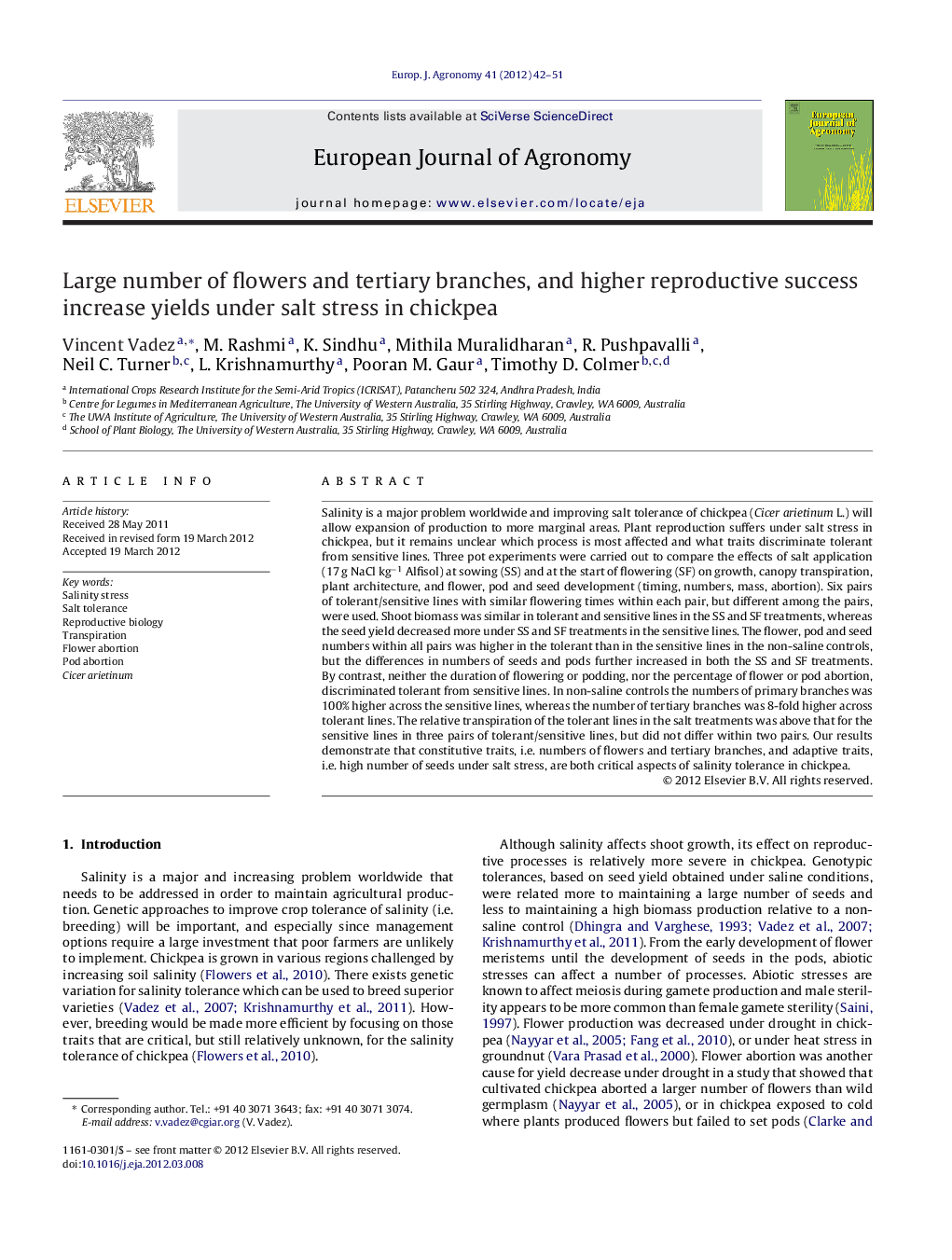| کد مقاله | کد نشریه | سال انتشار | مقاله انگلیسی | نسخه تمام متن |
|---|---|---|---|---|
| 4509105 | 1624485 | 2012 | 10 صفحه PDF | دانلود رایگان |

Salinity is a major problem worldwide and improving salt tolerance of chickpea (Cicer arietinum L.) will allow expansion of production to more marginal areas. Plant reproduction suffers under salt stress in chickpea, but it remains unclear which process is most affected and what traits discriminate tolerant from sensitive lines. Three pot experiments were carried out to compare the effects of salt application (17 g NaCl kg−1 Alfisol) at sowing (SS) and at the start of flowering (SF) on growth, canopy transpiration, plant architecture, and flower, pod and seed development (timing, numbers, mass, abortion). Six pairs of tolerant/sensitive lines with similar flowering times within each pair, but different among the pairs, were used. Shoot biomass was similar in tolerant and sensitive lines in the SS and SF treatments, whereas the seed yield decreased more under SS and SF treatments in the sensitive lines. The flower, pod and seed numbers within all pairs was higher in the tolerant than in the sensitive lines in the non-saline controls, but the differences in numbers of seeds and pods further increased in both the SS and SF treatments. By contrast, neither the duration of flowering or podding, nor the percentage of flower or pod abortion, discriminated tolerant from sensitive lines. In non-saline controls the numbers of primary branches was 100% higher across the sensitive lines, whereas the number of tertiary branches was 8-fold higher across tolerant lines. The relative transpiration of the tolerant lines in the salt treatments was above that for the sensitive lines in three pairs of tolerant/sensitive lines, but did not differ within two pairs. Our results demonstrate that constitutive traits, i.e. numbers of flowers and tertiary branches, and adaptive traits, i.e. high number of seeds under salt stress, are both critical aspects of salinity tolerance in chickpea.
► Salinity tolerant lines have larger number of flowers and tertiary branches under non-saline conditions than sensitive lines.
► Salinity tolerant lines maintain a larger number of seeds under saline conditions than sensitive lines.
► Tolerant lines have a higher reproductive success under salt stress than sensitive lines.
► Both constitutive (flowers and tertiary branches) and adaptive traits (reproductive success) are key to chickpea tolerance to salinity.
Journal: European Journal of Agronomy - Volume 41, August 2012, Pages 42–51